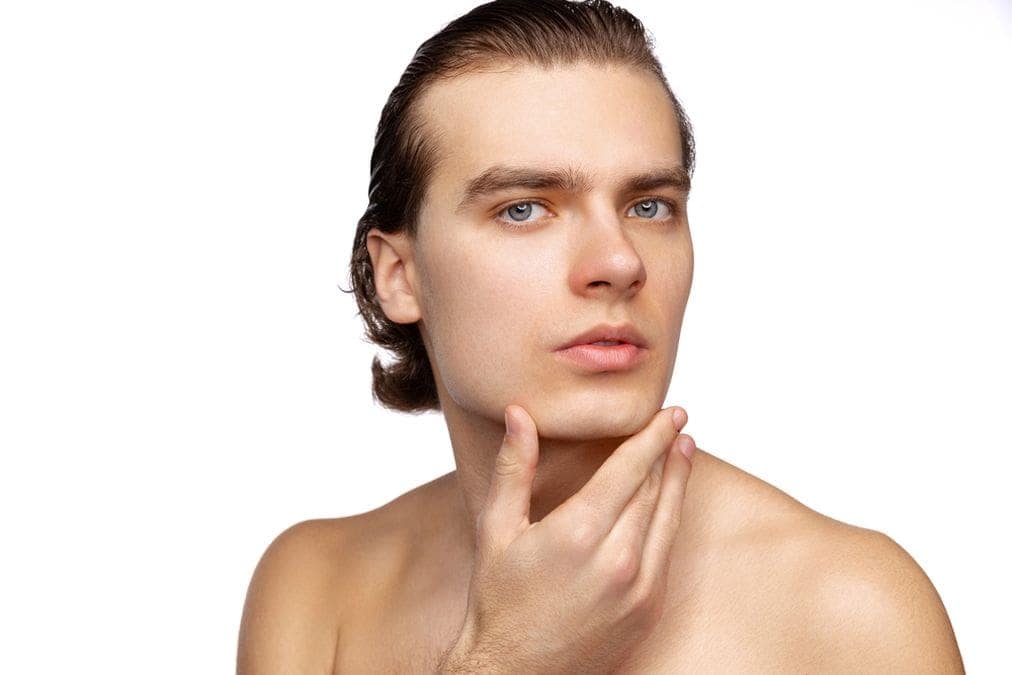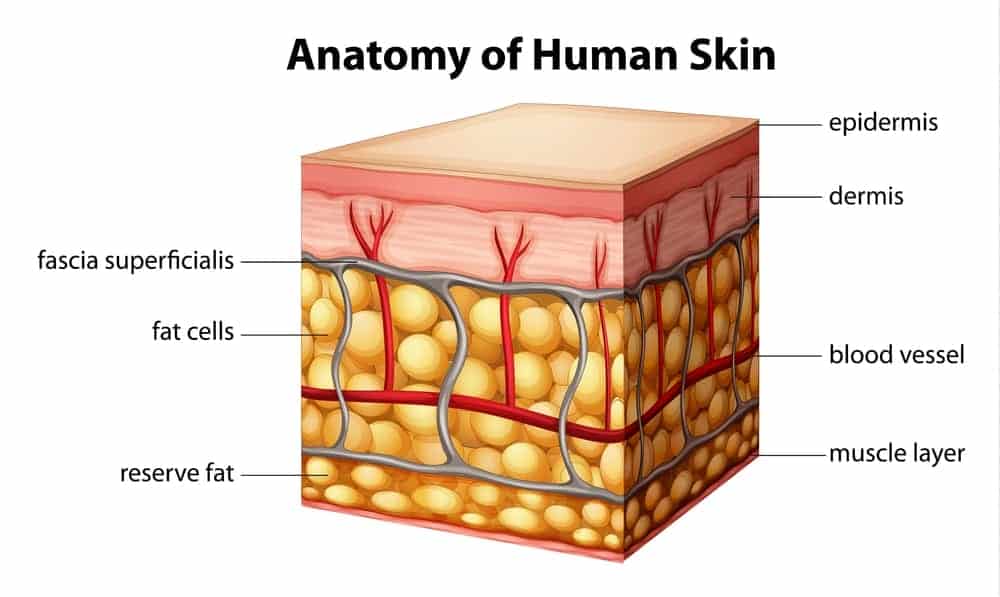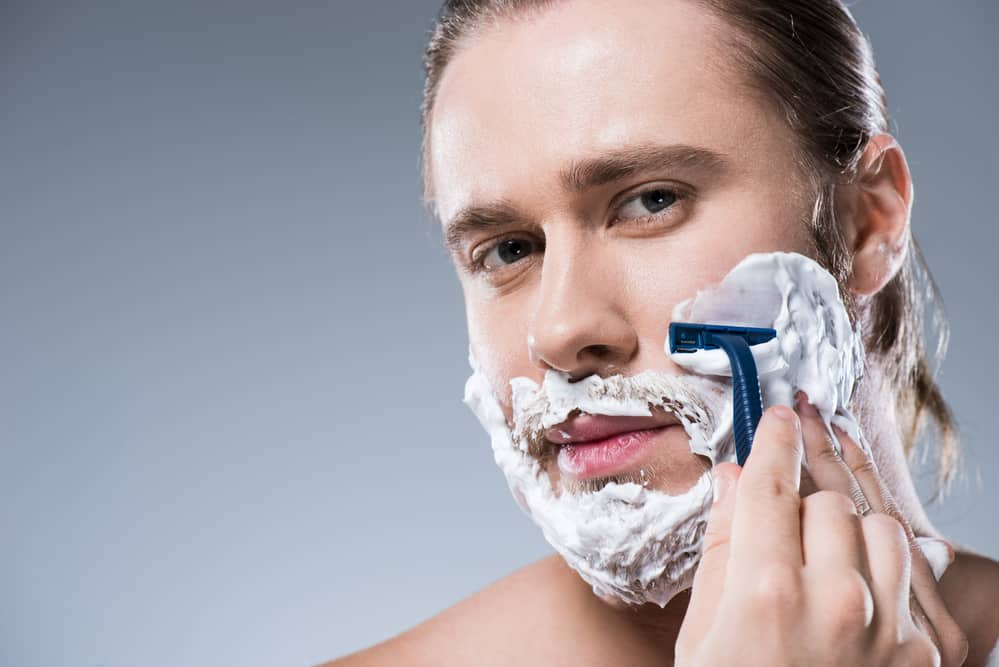
Male skin care – how a man should take care of the condition and health of his facial skin
If you browse through websites dedicated to daily skin care, you will easily notice that the vast majority are dedicated exclusively to women’s skin. They can find both expert advice created by professionals and a wide selection of cosmetics and natural methods for restoring radiance, health and vitality to the skin. However, men should also take care of it, if only to avoid many dangerous conditions that also negatively affect appearance, self-perception and self-esteem.
Contents
Why should you take care of your facial skin?

There is still an unfounded myth in our society that men do not need to take care of their skin, limiting themselves to washing it with soap and water only. The effects of this, unfortunately, are quickly reflected not only on the state of health, but also on the appearance, especially of the face. Fortunately, this unfavorable state of affairs is changing positively, and more and more men are starting to use cosmetics regularly.
At the same time it is necessary, resulting, among other things, from the difference in the structure of men’s skin compared to women‘s, as we will outline later in the text. These are important enough to affect the selection of appropriate skin care treatments.
What is skin and what is its anatomical structure?
Before we address the recommended rules for the daily care of men‘s skin, we should learn what the skin is and what functions it performs. The skin covers practically the entire human body, being one of its organs, and is made up of three layers:
The epidermis
Being the outer layer, with an extremely complex and elaborate structure, so it can effectively perform a protective function, and the epidermis is formed by as many as 4 layers:
- horny, consisting of two parts, keratinized and compact, which has large amounts of keratin in its composition, and its function is to protect against sunlight, excessive water loss and dryness of all other layers of the skin;
- granular, whose spindle-shaped cells and flattened nuclei condition the production of keratin;
- squamous, by far the thickest, and it is this that performs the primary protective functions against adverse external factors;
- basal, lying thickest, made up of elongated cells that divide and form new epidermal cells, which is why it is also called the reproductive layer.
Dermis
The most important layer, called the middle layer, with a thickness of up to 3 millimeters, made primarily of fibrous connective tissue, composed of two successive layers:
- papillary, whose name derives from the protrusions connected directly to the epidermis;
- reticular, adjacent to the subcutaneous tissue.
A characteristic feature of the dermis is the presence in it of blood vessels, nerve receptors, sebaceous and sweat glands and hair roots.
Subcutaneous tissue
The deepest layer, made up of several types of tissue, primarily adipose and connective tissue. Science, however, does not strictly include it among the layers of the skin, although it is directly related to it.
Skin appendages
That is, all the highly specialized formations of the epidermis that may be on the surface of the skin or connect to it through openings in the epidermis. The most important appendages of the skin are:
- glands, sebaceous and sweat glands;
- hair, the root of which is surrounded by a follicle that attaches the hair to the skin and terminates in a bulb;
- nails, which are keratinized epidermal lamellae located on the nail bed, consisting of a plate surrounded by a nail shaft.
What functions does the skin perform in the human body, and what are its types?

The total surface area of the skin covering the human body can range from 1.5 to 2 square meters, and its varied structure makes it perform various, often very specialized functions:
- protective against a variety of mostly unfavorable external factors, mechanical damage, temperature fluctuations, moisture, UV radiation, biological and chemical agents;
- maintaining the body’s water and electrolyte balance, thanks to the secretion of sweat by the sweat glands;
- absorption of nutrients through the process of dermal resorption;
- synthesis of melanin, the pigment responsible not only for the color of the skin, but also of the hair;
- determines the production of vitamin D under the influence of sunlight, necessary primarily for bone and nervous system health;
- Participates in the production processes of other compounds, proteins, hormones and carbohydrates;
- receiving, through receptors located in the skin and epidermis, stimuli coming from outside, heat, cold, touch or pain;
- endocrine secretion;
- Participation in the functioning of the immune system;
- water storage preventing excessive dryness of all layers of the skin.
It’s also worth learning about skin types, including men‘s, which can make it much easier to choose the right cosmetics for skin care. Medicine and cosmetics distinguish the following main types of skin:
- normal, without visible major imperfections, smooth and requiring little care;
- dry, devoid of radiance and vitality, dull, more prone to dryness and keratosis of the epidermis;
- oily, as the name suggests, with an increased tendency to sebum secretion, shiny, on which acne lesions and other pimples are more likely to appear;
- mixed, by far the most difficult to care for, denoting the presence of uneven areas on the face, some excessively dry and others excessively oily;
- mature, during the period when the skin’s natural aging processes begin, causing it to lose its firmness, elasticity and proper moisture levels, while the oval of the face is disturbed and wrinkles appear on it.
How does male skin differ from female skin?
We have already mentioned that men’s facial skin is significantly different from women’s skin, and the main differences that can affect its appearance, health and care are:
- thicker stratum corneum, by an average of 25 percent;
- a higher degree of hydration of the stratum corneum;
- lower pH of the skin;
- a greater number of melanocytes, the cells responsible for skin color, which is why the skin is generally darker in men;
- better skin tone resulting from the greater thickness of the dermis;
- greater number of collagen fibers in the skin and denser connections between them;
- lower skin elasticity, resulting from less elastin;
- slower appearance of wrinkles, which are also deeper than in women;
- increased sebum secretion resulting from more sebaceous glands;
- a higher incidence of acne and seborrheic dermatitis;
- increased activity of sweat glands;
- more hairiness on the skin;
- a higher incidence of skin cancer, which is caused, among other things, by not using creams or other cosmetics with UV filters.
Which skin care rules should every man follow?
Improperly cared for facial skin can become the cause of not only aesthetic, but also health problems, which is definitely worth saving yourself. Daily skin care should become a habit of every responsible man, and contrary to appearances, it is not a difficult task. All you need to do is follow the rules recommended by specialists and take care of your skin in the following few steps:
Step 1 – recognize the type and needs of the skin
We already know what skin types we may be dealing with, and the process of recognizing them is important for the proper selection of cosmetics to help rather than harm. It is also worth identifying the actual needs of the skin, what we want to achieve by implementing a properly selected skin care treatment, for example. to rejuvenate the skin, or to cleanse it of any imperfections.
Step 2 – cleansing the skin
Once we have cosmetics carefully selected for our skin type, we can proceed to its deep cleansing. The first task will be to wash the face with a gel that thoroughly removes all impurities and unclogs clogged skin pores. It is important that the gel should not cause any irritation or redness and at the same time restore the skin’s vitality and natural radiance.
Step 3 – moisturizing the face
Virtually every type of male skin requires proper moisturization, from the epidermis to the deepest layers of the skin. Properly selected preparations will not only replenish the lack of water, they will also allow to retain it deep in the skin, effectively preventingthus preventing it from drying out again, especially under the influence of harmful sunlight or other atmospheric factors.
Step 4 – using creams and toners
There is no denying that most men are dismissive of the use of creams for daily facial care. At the same time, they do not realize that men’s skin is only seemingly more resistant to the negative impact of external factors, which is due, among other things, to its thickness. Creams not only protect facial skin from UV radiation, moisture or cold, they also allow to moisturize it, with the help of such an ingredient as hyaluronic acid.
They inhibit and delay its aging process, remove free radicals thanks to antioxidant properties, and have an antibacterial effect. You should also remember to use toners that are tailored to your skin type, restore the skin’s natural pH, and are used after every washing and cleansing of the face, preferably in the morning and evening.
Step 5 – shaving the face

An important part of daily facial skin care for men is shaving the face, as not everyone has the recently so fashionable beards. Unfortunately, we associate shaving with painful skin irritation, not to mention possible cuts. A properly selected shaving foam designed for sensitive skin, with the addition of soothing mint and aloe vera, softening the beard, can help.
After shaving, you need to rub lotion into the face, it is better to use it instead of cologne, whose main ingredient is irritating alcohol. And if you have a beard, it, too, should be subjected to a number of care treatments, wash it in shampoos designed for this purpose and use oils that moisturize the hair, nourish it and accelerate its growth.
Step 6 – changing towels regularly
The last but not least important step is to regularly change towels in the bathroom. There is usually an elevated level of humidity, especially when there is no window and proper air circulation in this room. Such an atmosphere is not conducive to drying towels, and when they are damp, they provide an ideal environment for the growth of dangerous, pathogenic bacteria and fungi. Therefore, they should be changed at least twice a week, and in the meantime thoroughly dried after use.



